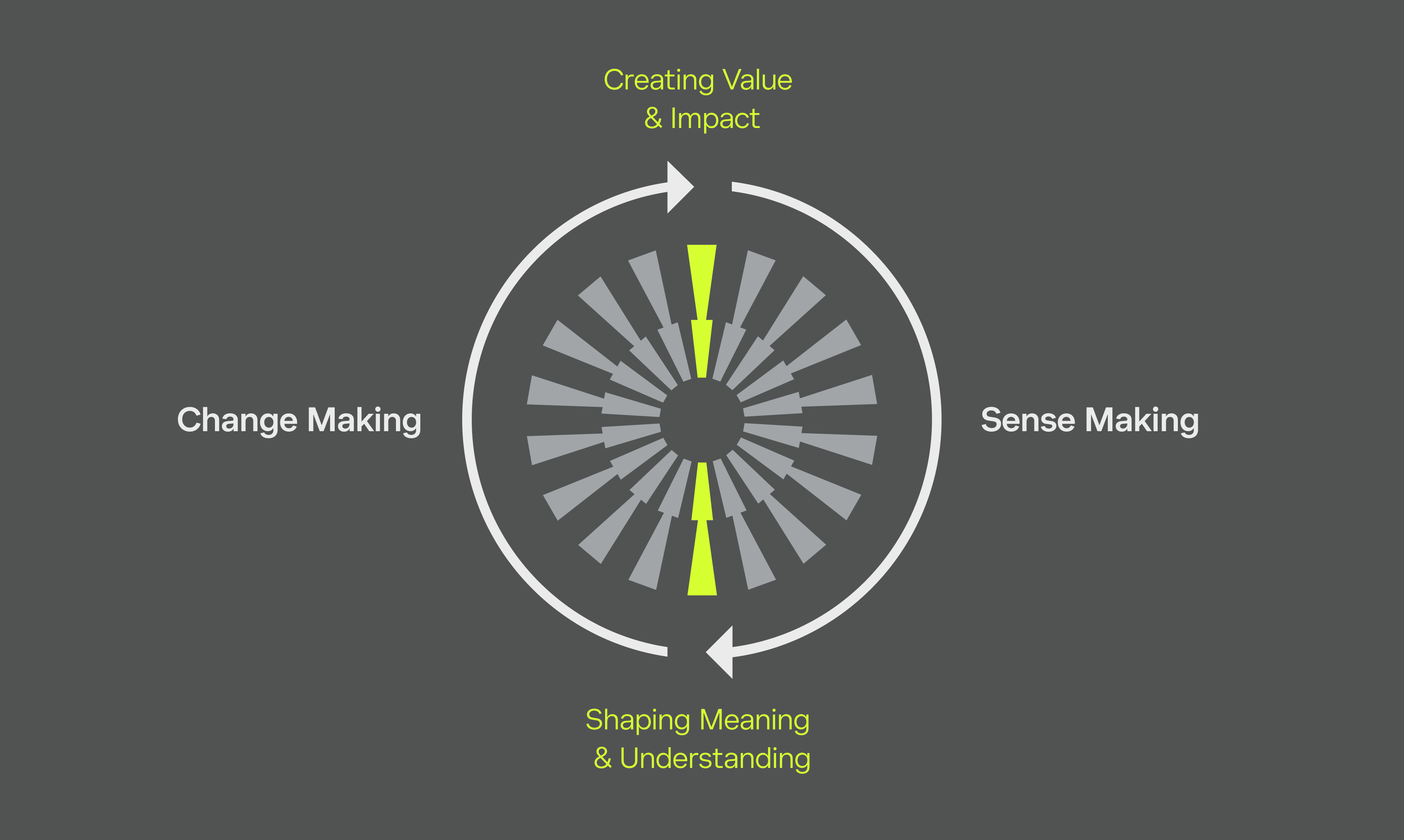An evolving practice
As a critical practice the currency of what I believe a “designer” deals in — is in essence about ‘change.’ This is where I choose to position myself and center my practice around; Whether that's optimising a feature, or transforming a product or shifting a business to remain competitive, or aspiring to disrupt the market - change is the central tenet of what underpins all design, creativity and innovation.
My Process
Adaptive process - subject to change

In my world, I'm on a mission to keep things both straightforward and flexible, zeroing in on my core design principles and the art of making change happen. This is where the magic unfolds, with a process that's seamless and unified, all in the pursuit of achieving desired outcomes, making a significant impact, and collaborating to forge valuable solutions.
This process revolves around just two pivotal but dynamic phases. In the first phase, you dive into the depths of creating clarity, shaping meaning, and understanding. The second phase you wield your powers of improvement, optimization, or even transformation to bring about that change, envisioning and creating new value.
Within these phases, expect evolution. Your methods, your strategies for discovery and development, the speed of your progress, and even the moment you call it a wrap – they're all open to adaptation. This process has been meticulously crafted to be simple, agile, efficient, and endlessly adaptable, making your process journey truly engaging and rewarding.
Design Principles
A guide to dynamic & value driven change
Read more about my approach here
Creating change that drives growth
Contact
Read cv: @patrickwmeehan
Dribble: @pwm
Medium: @patrickwmeehan
Instagram: @pwmdesign
© Patrick William Meehan 2024
Website built with Semplice